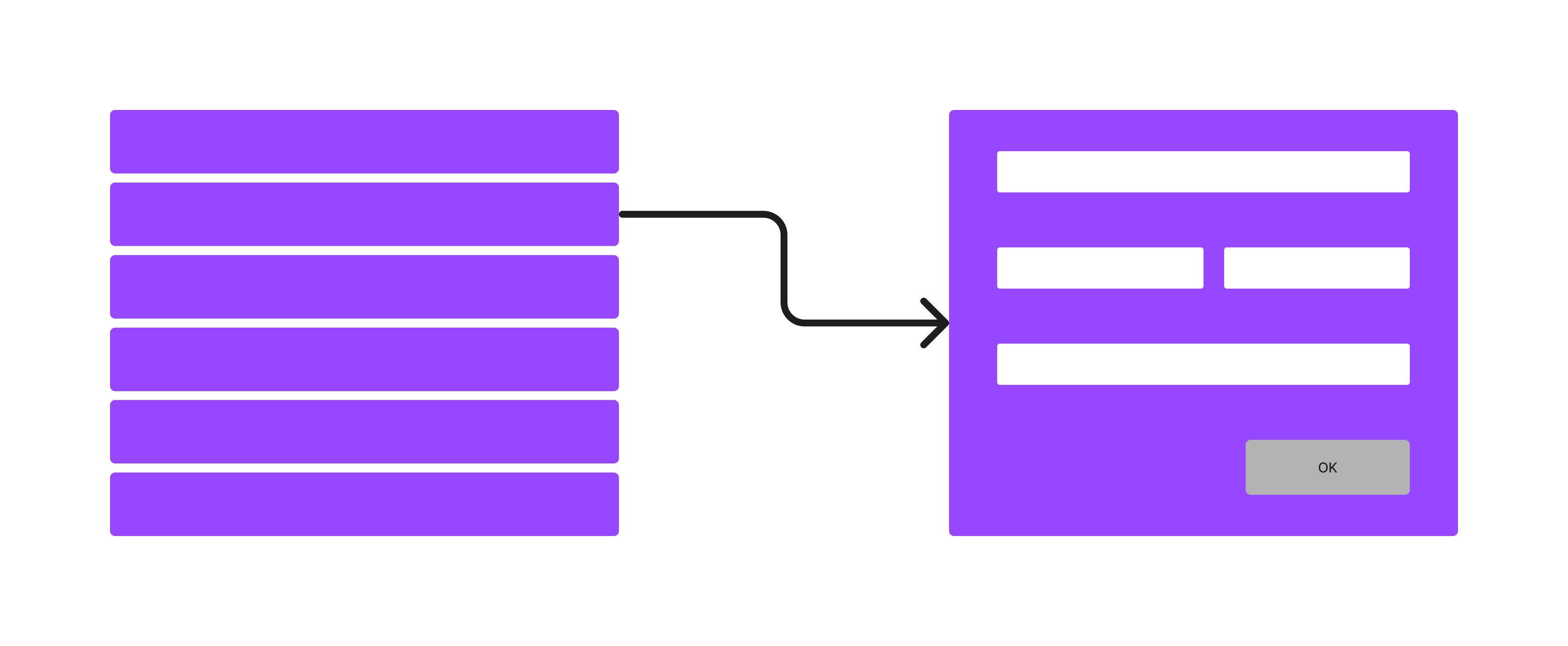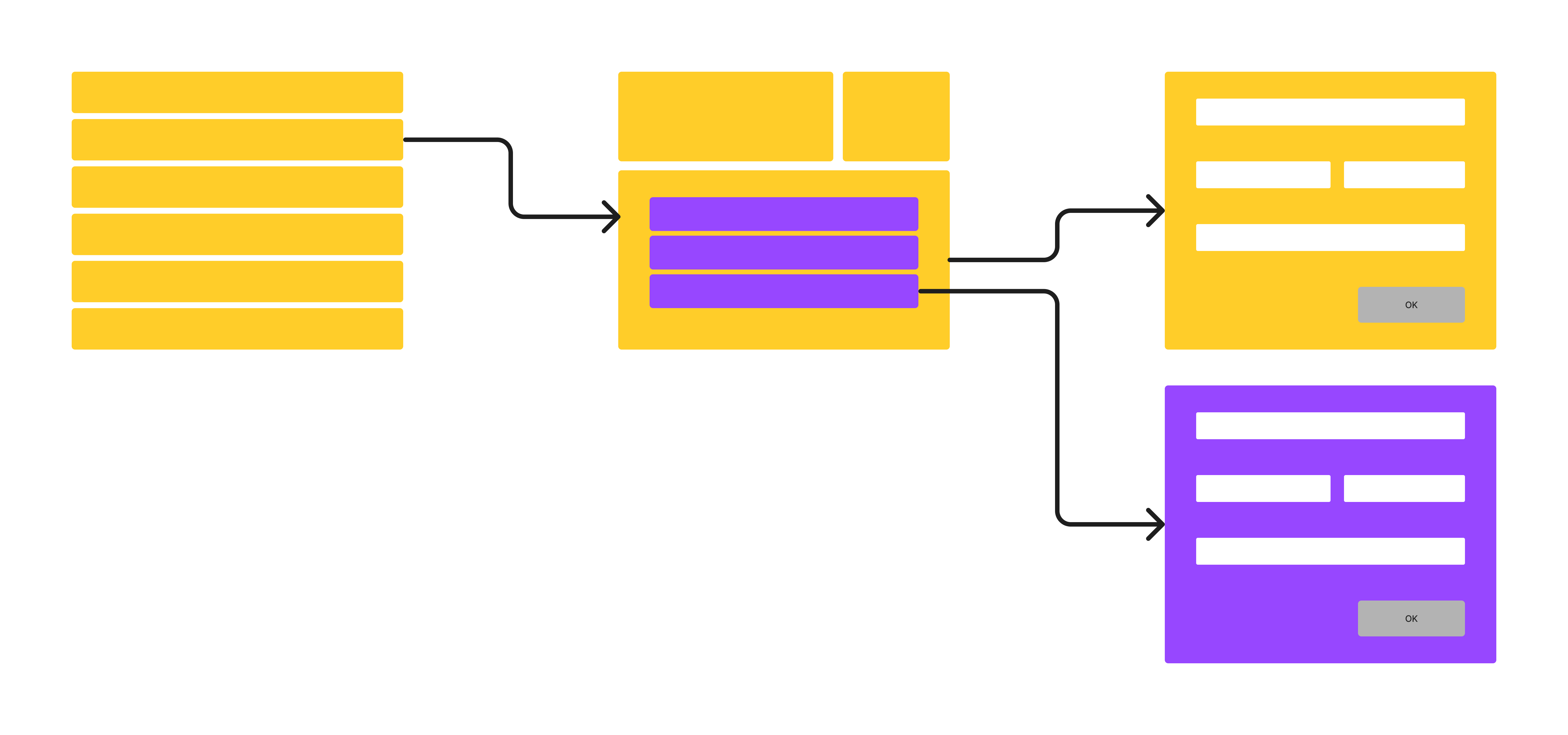Getting started and installation
Terminology, general concept
In Sharp, we handle entities; an entity is simply a data structure which has a meaning in the application context. For instance, a Person, a Post or an Order. In the Eloquent world, for which Sharp is optimized, it's typically a Model — but it's not necessarily a 1-1 relationship, a Sharp entity can represent a portion of a Model, or several Models.
An instance of an entity is simply called an instance.
Each entity in Sharp can be displayed:
- in an
Entity List, which is the list of all theinstancesfor thisentity: with some configuration and code, the user can sort the data, add filters, pagination, and perform searches. From there we also gain access to applicativecommandsapplied either to any particularinstanceor to the whole (filtered) list, and to a simplestatechanger (the published state of an Article, for instance). All of that is described below. - In a
Show Page, optionally, to display aninstancedetails. - And in a
Form, either to update or create a newinstance.
Example
Let's take a simple example: we want to manage some shop, with 3 obvious entities: Order, Customer and Product.
We want to be able to list all the customers, to display a detailed view for each of them, and to create or update a customer. That’s an Entity List linking to a Show Page, linking to a Form:

For products, we decide that we don't need to build a Show Page:

The product Entity List may have filters, sorting columns and search, and an Entity state to manage the published state of each product.
Finally, orders, must be listed, detailed and updatable, and we also need to manage the product list of each order. That's an Entity List linking to a Show Page which contains another Entity List:

Maybe we can add an Entity Command to export orders in a CSV file in the Entity List, and an Instance command on the order Show Page to declare the order as shipped.
This is a simple example to illustrate the main concepts of Sharp: we'll see in this guide how to build such structures but also more complexe ones, and how to manage states, commands, dashboards, authorizations, errors, validation... in the process.
Installation
Sharp 9 needs Laravel 11+ and PHP 8.3+.
- Add the package with composer:
composer require code16/sharp - Then run:
php artisan sharp:install
This last script will publish required assets, create a SharpServiceProvider in the App\Providers namespace, and a SharpMenu class in the App\Sharp namespace.
Configuration via a new Service Provider
All Sharp behavior is configured in the App\Providers\SharpServiceProvider class created by the sharp:install command; you can declare your entities in the configureSharp() method:
use Code16\Sharp\SharpAppServiceProvider;
use Code16\Sharp\Config\SharpConfigBuilder;
use App\Sharp\SharpMenu;
class SharpServiceProvider extends SharpAppServiceProvider
{
protected function configureSharp(SharpConfigBuilder $config): void
{
$config
->setName('My new project')
->setSharpMenu(SharpMenu::class)
->declareEntity(ProductEntity::class);
// ...
}
}TIP
As shown in the Entity class documentation, you can also let Sharp autodiscover your entities.
This ProductEntity class could be written like this:
class ProductEntity extends SharpEntity
{
protected string $label = 'Product';
protected ?string $list = ProductList::class;
protected ?string $show = ProductShow::class;
protected ?string $form = ProductForm::class;
protected ?string $policy = ProductPolicy::class;
}We chose to define:
- a
listclass, responsible for theEntity List, - a
showclass, responsible for displaying aninstancein aShow Page, - a
formclass, responsible for the create and editForm, - and a
policyclass, for authorizations.
Almost each one is optional, in fact: we could skip the show and go straight to the form from the list, for instance.
We'll get into all those classes in this guide. The important thing to notice is that Sharp provides base classes to handle all the wiring (and more), but as we'll see, the applicative code is totally up to you.
TIP
Use the artisan command php artisan sharp:make:entity to generate a new entity with all the required classes, or the global one (prompt based) php artisan sharp:generator.
Access to Sharp
Once installed, Sharp is accessible via the url /sharp, by default. If you wish to change this default value, you'll need to configure a custom segment path:
class SharpServiceProvider extends SharpAppServiceProvider
{
protected function configureSharp(SharpConfigBuilder $config): void
{
$config
->setCustomUrlSegment('admin')
// ...
}
}